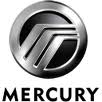A brief history of
Mercury
Introduction
The car manufacturer Mercury has made an important impact on the automotive world. In this article we will give a brief but detailed history of the Mercury marque.
We will look at the origins of Mercury looking at who, why, where and when Mercury was founded. We'll look at the design of the iconic Mercury logo and what are some the more significant Mercury models.
We'll take a glance at what racing history the Mercury has and who some of the most important people have been in the history of Mercury over the years.
Who, where, when and why was
Mercury founded?
Mercury, the American automobile brand, was founded in 1938 by the Ford Motor Company. It was established as a mid-priced division to fill the gap between the affordable Ford brand and the luxury Lincoln brand. The inception of Mercury was a strategic move by Ford to capture a larger market share and offer customers a range of vehicles that combined style, performance, and affordability.
The decision to create the Mercury brand came at a time when the automotive industry was evolving rapidly, with customers demanding more options and features. Ford recognized the opportunity to introduce a brand that would appeal to a broader audience and compete with other mid-priced car manufacturers.
The first Mercury car, the 1939 Mercury Eight, was introduced in November 1938. It was designed with sleek and modern styling, distinguishing it from the Ford models while sharing some components and platforms. The Mercury Eight quickly gained popularity among consumers for its attractive design, improved performance, and affordable price point.
The success of the Mercury Eight laid the foundation for the brand's future models. Throughout the following decades, Mercury continued to produce a range of vehicles, including sedans, coupes, convertibles, and station wagons. The brand positioned itself as a step up from Ford in terms of features and style, while remaining more attainable than the upscale Lincoln models.
Mercury became known for its innovative designs, incorporating features such as chrome accents, distinctive grilles, and luxurious interiors. The brand also introduced advancements in engine technology, offering more powerful and efficient engines to enhance performance. These features helped Mercury vehicles appeal to a wide range of customers, including families, young professionals, and car enthusiasts.
Over the years, Mercury continued to evolve, adapting to changing consumer preferences and market conditions. However, the brand faced challenges as competition increased and consumer demand shifted towards more fuel-efficient and environmentally friendly vehicles. In 2010, Ford made the decision to discontinue the Mercury brand, focusing its resources on its other brands, including Ford and Lincoln.
Despite its discontinuation, the legacy of Mercury remains, with many classic models still cherished by collectors and enthusiasts. The brand's contribution to the automotive industry, particularly during its heyday in the mid-20th century, is recognized for its blend of style, performance, and affordability.
How did the
Mercury logo originate?

How did the Mercury logo originate?
The logo of the car manufacturer Mercury has undergone several changes throughout its history. When the brand was first introduced in 1939, its logo featured a sleek, stylized representation of the Roman god Mercury, known for his speed and agility. The emblem depicted a winged helmet, symbolic of the god's ability to travel swiftly, and a winged foot, representing his swiftness.
As the years went by, the Mercury logo underwent a series of refinements and updates. In the 1950s, the emblem took on a more streamlined and modern look, reflecting the design trends of the era. It featured a simplified depiction of the winged helmet, with clean lines and bold styling. The logo was often displayed prominently on the front grille and rear of the vehicles, serving as a distinctive identifier for the brand.
In the 1970s and 1980s, the Mercury logo evolved further, adopting a more contemporary and refined appearance. The emblem became more three-dimensional, with shading and depth added to the design. The winged helmet motif was retained but was given a more polished and sophisticated look.
Throughout its history, the Mercury logo has symbolized the brand's identity as a maker of stylish, performance-oriented vehicles. It has represented the values of speed, agility, and forward motion, aligning with the brand's positioning in the market.
With the discontinuation of the Mercury brand in 2010, the logo has become a nostalgic symbol of an era gone by. However, it continues to hold a place in the hearts of Mercury enthusiasts and collectors who appreciate the brand's heritage and the design elements that were incorporated into the logo over the years.
What are some of the significant
Mercury models?
Mercury, the American automobile brand, has a rich history of producing significant models, especially in the realm of higher performance vehicles. Over the years, the brand has introduced several notable models that have captured the attention of car enthusiasts.
In the 1950s, Mercury introduced the Monterey, a full-size car that became synonymous with power and style. It featured a powerful V8 engine and sleek, aerodynamic design, making it a popular choice among performance enthusiasts of the era. The Monterey was known for its smooth ride, luxurious interior, and impressive acceleration, cementing its reputation as one of Mercury's top performers.
During the 1960s and 1970s, the Cougar emerged as a standout model in Mercury's lineup. The first-generation Cougar, introduced in 1967, was designed as a stylish and high-performance alternative to the Ford Mustang. It featured a range of powerful engines, including V8 options, and offered enhanced handling and performance capabilities. The Cougar XR-7, in particular, gained popularity with its luxurious features and sporty styling.
As the 1980s rolled in, Mercury unveiled the Capri, a compact sports car that garnered attention for its nimble handling and spirited performance. The third-generation Capri, launched in 1989, featured a turbocharged engine and advanced suspension system, delivering an exhilarating driving experience. The Capri was celebrated for its combination of power and agility, making it a favorite among driving enthusiasts.
In the early 2000s, the Mercury Marauder made a resurgence, paying homage to the brand's heritage of performance-oriented vehicles. The Marauder featured a powerful V8 engine, sport-tuned suspension, and unique styling cues that set it apart from other sedans on the market. Its aggressive stance and potent performance capabilities solidified its status as a modern-day muscle car.
Mercury's commitment to high-performance models continued with the introduction of the Mariner Hybrid in the mid-2000s. This compact SUV combined a gasoline engine with an electric motor, delivering both power and fuel efficiency. The Mariner Hybrid showcased Mercury's dedication to developing environmentally conscious yet performance-driven vehicles.
Throughout its history, Mercury has consistently pushed the boundaries of performance and style. Whether it was the Monterey, Cougar, Capri, Marauder, or Mariner Hybrid, each model represented the brand's commitment to providing thrilling driving experiences. These high-performance models have left an indelible mark on automotive history and continue to be celebrated by enthusiasts who appreciate Mercury's legacy of powerful and dynamic vehicles.

One of Mercury's Most Iconic Models
Who are some of the most important people in
Mercury's History
Behind the success of the car manufacturer Mercury are the individuals who played significant roles in its development and legacy. These individuals, with their innovative thinking and leadership, have contributed to the brand's growth and reputation.
One of the notable figures in Mercury's history is Edsel Ford, the son of Henry Ford and the president of Ford Motor Company from 1919 to 1943. Edsel Ford had a profound influence on Mercury's establishment, as he played a key role in its formation in 1938. Recognizing the need for a mid-priced car to bridge the gap between Ford's mainstream models and the luxury offerings of Lincoln, Edsel Ford championed the creation of the Mercury brand. His vision for Mercury was to offer customers a more upscale product while maintaining a focus on affordability and performance.
Another influential figure in Mercury's history is Leo A. Schnitzer, who served as the brand's president in the 1960s. Schnitzer led the company during a period of growth and expansion, overseeing the development and launch of several successful models. Under his leadership, Mercury experienced a renaissance in the 1960s, with the introduction of iconic models such as the Cougar and the Marauder. Schnitzer's keen understanding of the market and his ability to identify and capitalize on consumer trends played a crucial role in Mercury's success during this era.
In the late 1990s and early 2000s, the leadership of Mark Hutchins brought fresh energy and a renewed focus to Mercury. As the brand's general manager, Hutchins led the team responsible for reviving Mercury's lineup and repositioning it in the market. He spearheaded the development and launch of key models such as the Mountaineer SUV and the Marauder, both of which aimed to attract a younger, performance-oriented demographic. Hutchins' strategic vision and commitment to innovation helped reinvigorate the Mercury brand and solidify its place in the automotive industry.
Additionally, the contributions of countless engineers, designers, and other professionals within Mercury should not be overlooked. Their collective expertise and dedication to excellence have shaped the brand's reputation for quality and performance. From the engineers who designed powerful engines to the designers who crafted striking exteriors and luxurious interiors, these individuals have played a vital role in creating the driving experience associated with Mercury vehicles.
Throughout its history, Mercury has been fortunate to have visionary leaders and talented individuals who have shaped its path. From Edsel Ford's initial vision to Leo A. Schnitzer's transformative era and Mark Hutchins' strategic initiatives, these leaders, along with the countless professionals behind the scenes, have left an indelible mark on Mercury's legacy.

One of the most influential people in the history of Mercury
Mercury's Racing History
The racing history of the car manufacturer Mercury is rich with notable achievements and exciting moments on the track. While Mercury is primarily known for producing consumer vehicles, it has also ventured into various forms of motorsport, showcasing its performance capabilities and competitive spirit.
One significant chapter in Mercury's racing history is its participation in NASCAR (National Association for Stock Car Auto Racing) events. In the late 1950s and early 1960s, Mercury fielded competitive entries in NASCAR's top series, often going head-to-head with rival manufacturers on the high-speed ovals. Mercury's racing efforts paid off when driver Buck Baker clinched the NASCAR Grand National championship in 1957, piloting a Mercury Monterey. This victory solidified Mercury's presence in the racing world and brought attention to the brand's performance-oriented vehicles.
In addition to NASCAR, Mercury also had a notable presence in drag racing. The brand's powerful engines and aerodynamic designs made it a popular choice among drag racing enthusiasts. Throughout the 1960s and 1970s, Mercury produced high-performance models such as the Cyclone and Cougar, which became popular contenders in drag racing competitions. The Cyclone Spoiler II, in particular, was specifically built for drag racing, featuring a lightweight body and a range of powerful engine options.
Mercury's involvement in motorsport extended beyond traditional racing disciplines. The brand also ventured into the world of endurance racing, participating in events such as the 24 Hours of Daytona and the 12 Hours of Sebring. One of the most memorable moments in Mercury's endurance racing history came in 1966 when a Mercury Comet Cyclone campaigned by Holman-Moody won its class in the 24 Hours of Daytona. This victory showcased Mercury's ability to perform under grueling conditions and further solidified its reputation as a competitive racing brand.
Throughout the years, Mercury's racing endeavors have demonstrated the brand's commitment to performance and its desire to push the limits on the track. From NASCAR to drag racing and endurance events, Mercury has left its mark in various motorsport disciplines, showcasing the capabilities of its vehicles and the dedication of its racing teams. The racing history of Mercury serves as a testament to the brand's pursuit of excellence and its desire to thrill enthusiasts both on and off the racetrack.
Summary
Mercury is a car manufacturer known for producing vehicles that offer a blend of style, comfort, and performance. With a rich history spanning several decades, Mercury has established itself as a respected brand in the automotive industry. From its inception, Mercury has aimed to provide a step up from mainstream Ford models, offering a more premium and refined driving experience.
The brand has introduced a range of significant models over the years, each contributing to its reputation for quality and craftsmanship. From the iconic Mercury Cougar, which combined sporty styling with powerful performance, to the luxurious Mercury Grand Marquis, known for its spaciousness and smooth ride, Mercury has consistently delivered vehicles that cater to diverse customer preferences.
Mercury has also demonstrated its commitment to innovation with models like the Mercury Marauder, a high-performance variant that offered an exhilarating driving experience. The brand's dedication to performance was further highlighted through its participation in motorsports, including NASCAR and drag racing, where Mercury vehicles showcased their capabilities on the track.
Overall, Mercury has carved a niche for itself in the automotive landscape, providing a balance of style, performance, and comfort. With its lineup of notable models and a legacy of racing achievements, Mercury has left a lasting impression on car enthusiasts around the world.
View Mercury Car Specifications
More Manufacturer Histories.

























